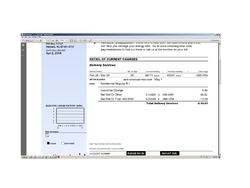I put up 4.6 kw of grid tied solar panels last on the roof last year , roughly half in Dec 2012, and the rest in June of 2013. Since installation I’ve been building up a credit with national grid. Eventually I intend to use those credits to heat the house with a Fujitsu heat pump, but, so far, I find it difficult to wean myself off the woodstove ( a progress hybrid) .
I generated about 6 MWH last year, and got SREC payments of ~$1500 ( Massachusetts) .For those of you interested in numbers the ROI is ~15% , helped in large part by the reduction in capital outlay (due to Federal tax credit and state rebates)
That said, the biggest kick I get is the electric bill which shows a dollar credit from month to month .
I generated about 6 MWH last year, and got SREC payments of ~$1500 ( Massachusetts) .For those of you interested in numbers the ROI is ~15% , helped in large part by the reduction in capital outlay (due to Federal tax credit and state rebates)
That said, the biggest kick I get is the electric bill which shows a dollar credit from month to month .


